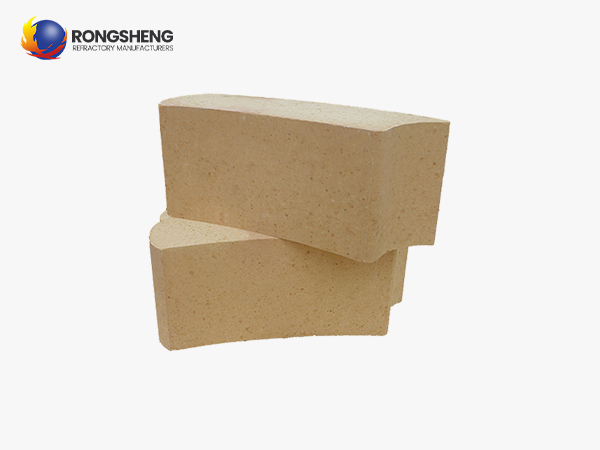Brief Introduction
Curved refractory bricks are special refractory materials designed for curved structures of high-temperature industrial equipment. They have high temperature resistance, corrosion resistance and structural adaptability.
Material And Classification
➤Material type
Mainly divided into high-alumina (alumina content ≥50%, refractoriness ≥1770℃), clay, siliceous, etc., among which high-alumina has become the mainstream due to its strong slag resistance and long life.
➤Specification parameters
The common sizes are 300×150×75mm and 350×175×80mm. The radius of the arc is selected according to the actual needs of the kiln. The larger the radius, the stronger the load-bearing capacity.
Technical Data
| Rongsheng Curved Brick | |||
| Index | 40 – 45% AluminaFireclay Brick | 30 – 35% AluminaFireclay Brick | |
| Item | Unit | 1600°C | 1500°C |
| Bulk Density | g/cm³ | 2.2 | 2.1 |
| Apparent Porosity | % | 22 | 24 |
| Modulus of Rupture | kg/cm² | 90 | 80 |
| Cold Crushing Strength | kg/cm² | 300 | 250 |
| Linear Expansion 1350°C | % | 0.2 | 0.2 |
| Refractoriness Under Load | °C | 1450 | 1300 |
Typical Application Scenarios
➤Metallurgical industry
Used for lining of blast furnaces, converters, and steel ladle to withstand the impact of high-temperature molten liquid.
➤Ceramic and glass industry
As the inner wall material of kilns, it ensures the stability of high-temperature firing.
➤Chemical equipment
Applied to high-temperature reaction vessels to resist chemical corrosion.

